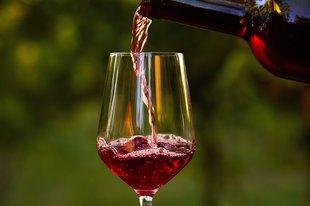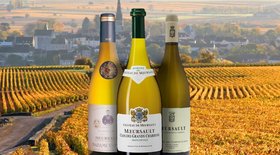Carménère (Wine Regions, Taste, Best Wines 2025)
What’s special about the mysterious Carmenere grape and the delicious red wine made from it?
Though the Carmenere grape originated in Bordeaux, it is nearly extinct there, and is primarily grown in Chile today.
Let’s get started and find out all there is to know about this grape variety - including its fascinating history, where it’s grown, Tasting Notes, and the best Carmenere wine to buy in 2024!
Further reading
- Get the most out of clever wine investments using this Ultimate Guide To Wine Investing.
- Are you a fan of New World Reds? Dive into into world of the Robert Mondavi Winery and its best wines.
What is Carmenere?
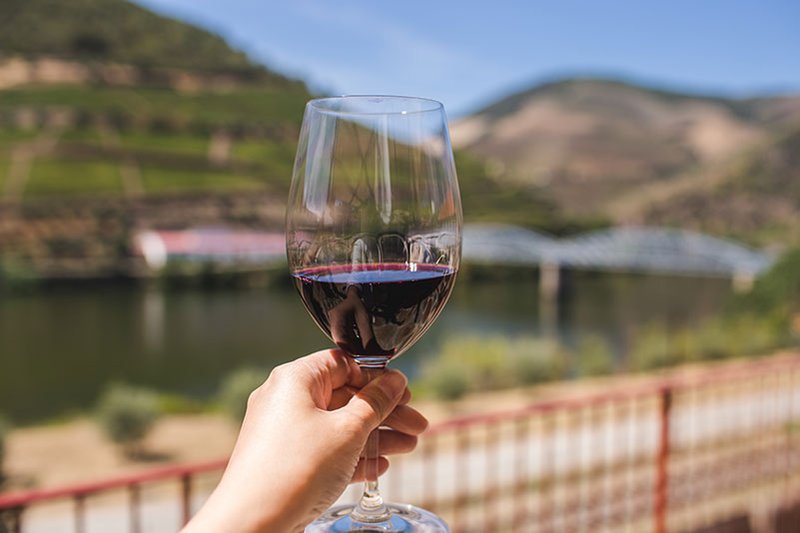
Carmenere is a French red grape variety that is grown mainly in Chile and a smaller amount in Italy and Bordeaux.
It produces an aromatic and tart red wine. It is one of the six wine grape varieties used in the red Bordeaux blend - apart from Cabernet Franc, Merlot, Petit Verdot, Cabernet Sauvignon, and Malbec. (Read more about Malbec wine here.)
The name “Carmenere” means “Crimson” - which is apt, as the wine has a gorgeous deep ruby hue. It is also called Biturica and Grand Vidure.
- Read more: Indulge in these world-class Champagne bottles that are ideal for drinking and investing! Don’t forget to serve them in the right Champagne glasses.
- Also try out these wine cocktails - Sangria and Mimosa. The Carmenere grape has a mysterious history. Let’s explore.
A Brief History of Carmenere
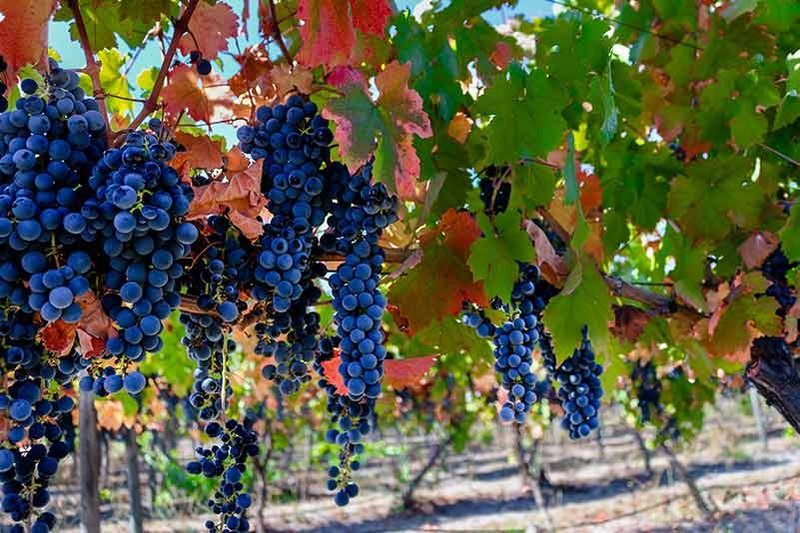
It was previously thought that the Carmenere variety was a clone of Cabernet Sauvignon.
There were other unfounded theories that the Carmenere variety is an ancient grape from Spain.
After genetic testing in 2013, it was proven that the grape originated from the Medoc region in Bordeaux, France. In Bordeaux, it was historically used as a blending grape and primarily grown in the Pessac Leognan appellation.
The Carmenere grape variety was proven to be the offspring of Murai and Cabernet Franc. (Interestingly, Carmenere, Cabernet Sauvignon, and Merlot are all the offspring of Cabernet Franc.)
In 1867, a phylloxera plague destroyed Bordeaux vineyards. This particularly impacted the Carmenere vine, and French winemakers chose not to replant them. It was a difficult grape to grow in the moderate Bordeaux climate and a risky financial investment for winemakers. They chose to focus their energy on other Bordeaux blend wines that were easier to produce and more profitable.
Years later, in 1994, after the Carmenere grape was thought to be extinct because of the phylloxera plague, it was discovered flourishing in Chile by the French ampelographer Jean-Michel Boursiquot!
Chilean winemakers had been mistakenly calling the grape variety “Merlot Peumal” after the Chilean Peumo Valley.
Apparently, wine growers accidentally brought the vine cuttings over to Chile around 1850. They thought that they were importing Merlot!
Today, the European Union still does not allow Carmenere wine labeled as Grand Vidure to be imported. This is because the name “Grand Vidure” is still synonymous with Cabernet Sauvignon.
- Also read: Find out the best Sauvignon Blanc wines to try in 2024!
- Also check out other white wines - Zinfandel and Riesling.
Where is Carmenere Grown?

Since it is such a fussy grape, a Carmenere planting will only flourish in specific countries and regions.
Chilean Carmenere takes up 98% of all Carmenere wines produced worldwide. In Chile, it’s mainly grown in Colchagua Valley and Maipo Valley.
- Colchagua Valley: This is a central valley at the foot of the Andes mountains in Chile. The Colchagua Valley is a part of the larger Rapel Valley, made up of the Colchagua and Cachapoal Valleys. It has a warm climate, softened by an ocean breeze and the occasional rainfall - perfect for growing Carmenere.
- Maipo Valley: Maipo Valley lies to the south of Santiago, and has been described as the Bordeaux of South America. Central Maipo is where most of the Carmenere, and Cabernet Sauvignon, is grown.
You’ll also find a smaller area of Carmenere plantings in France and Italy.
- France: In the Medoc region, small amounts (4 hectares) of the grape are planted at Chateau Mouton Rothschild in Pauillac and Chateau Clerc Milon.
- Italy: Veneto and Fruili-Venezia are the main Carmenere regions.
The other countries where Carmenere is grown in much smaller quantities are New Zealand, USA, Australia, South Africa, and Argentina.
Read more: Find out the top wines from the beautiful Chianti wine region in Italy. If you’re keen on French wines, check out !
Carmenere Grape Viticulture and Winemaking
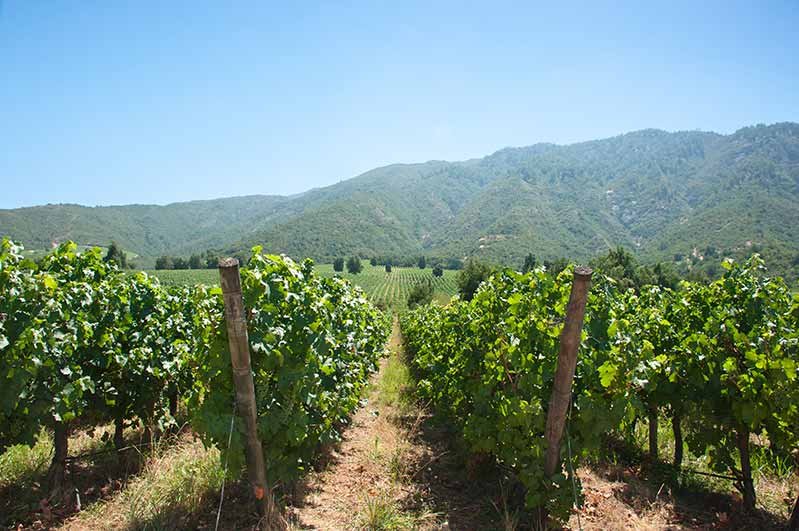
Carmenere does well in Chile because it prefers warmer climates. The summer heat needs to continue into autumn as the grape ripens, so cold autumns are a no-go for the Carmenere vineyard.
However, if the climate is too hot, these red grapes suffer, impacting the taste. Also, excessive heat will make the alcohol levels too high.
A Carmenere vineyard will excel in well-drained soil that is rocky with clay. If the ground is too deep or too fertile, then the grape won’t ripen properly.
When it comes to winemaking, most Carmenere wines undergo malolactic fermentation, as well as aging in French oak barrels. Carmenere wine aged for a minimum of five years, with at least two years in oak barrels, gains a Gran Reserva wine status.
Also read: Check out this handy guide on Rose wine!
Carmenere Tasting Notes and Food Pairings
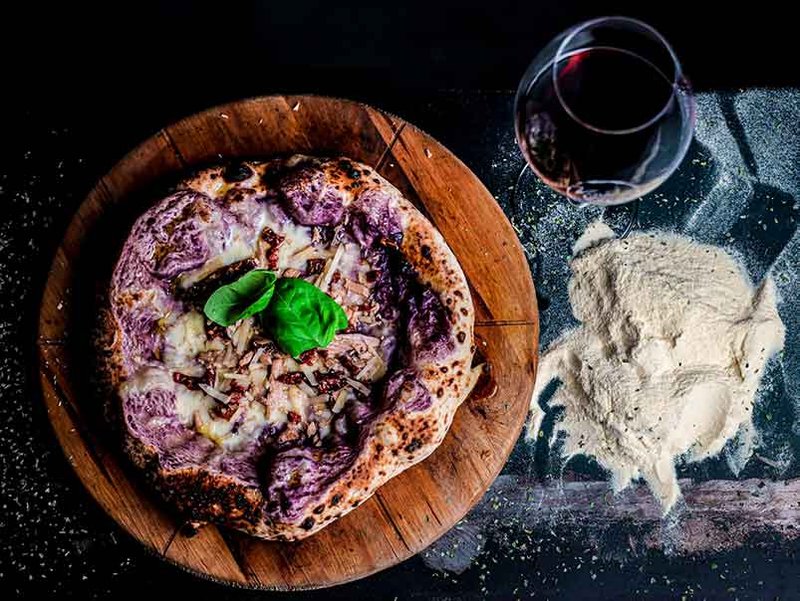
Carmenere has naturally high acidity and is a fruity and well-balanced red wine. It has distinct notes of herbaceous bell pepper and red fruit flavors.
When Carmenere is used as a blending grape and mixed with grapes like Cabernet Franc or Merlot, the wine often has dark fruit and berry flavors. Carmenere has soft tannins and a plush and refined palate.
Now, Carmenere and Merlot are red grapes with enough similarities that they have been confused for each other in the past. But, they also have a few marked differences. Let’s see what they are.
Read more: Meanwhile try out these exotic Champagne cocktails including a Kir Royale!
How Does Carmenere Differ From Merlot?
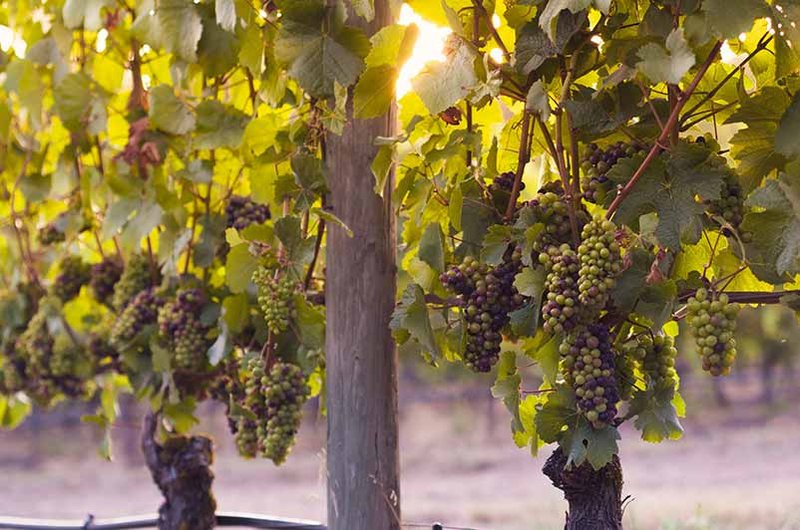
The Carmenere vine takes longer to ripen and has a longer growing season than the Merlot vine does.
They’re strikingly similar in appearance - even the vine leaves have a similar shape. A trick to tell whether the vine is Merlot or Carmenere is to look under the leaf. The underside of a Merlot leaf will be white, whereas a Carmenere leaf's underside will have a red hue.
Both Carmenere and Merlot are dark violet in color, with rich flavors of pepper and fruit. However, while Merlot showcases dark fruit, Carmenere has distinct red fruit flavors. Plus, Merlot red wine has more tannins than Carmenere does.So, which bottles of Carmenere wine should you add to your wine collection?
Best Carmenere Wines to Buy in 2024

Finding the best bottles of Carmenere for drinking or for gifting can be challenging - so we’ve done the research for you.
1. Concha y Toro Carmin de Peumo Carmenere, Cachapoal Valley, Chile, 2013
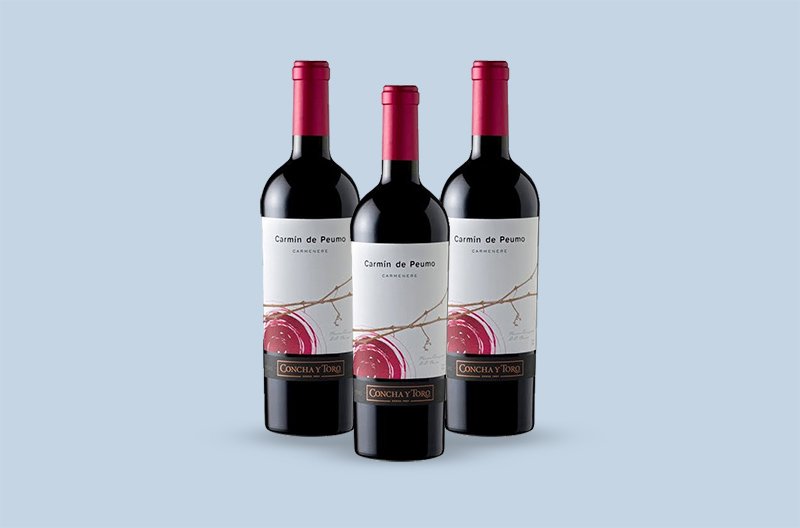
This is a delicious blended wine of Carmenere and a small amount of Cabernet Sauvignon and Cabernet Franc. It is a bold wine with soft tannins and black fruit. The addition of Cabernet Sauvignon adds an oaky flavor to the wine.
Price of Concha y Toro Carmin de Peumo Carmenere, Cachapoal Valley, Chile, 2013: $140
2. Errazuriz Kai Carmenere, Aconcagua Valley, Chile, 2013
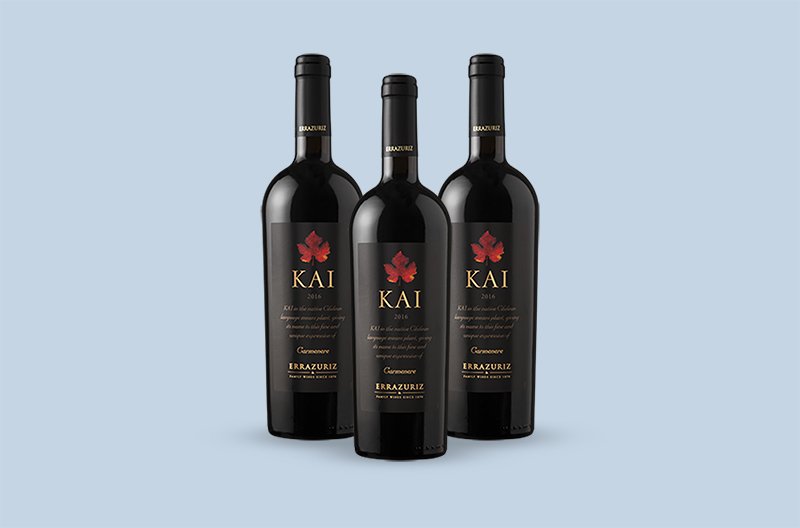
Here we have a dry, well-balanced Chilean Carmenere with 7% Syrah. It has aromas of smoke and black pepper. It is aged for almost two years in French oak barrels.
This is an elegant and bold wine with a fresh palate of dark fruit, chocolate, and coffee. Pair this red wine with lamb or chicken with herbs.
Price of Errazuriz Kai Carmenere, Aconcagua Valley, Chile, 2013: $132
3. Santa Carolina Herencia Carmenere, Peumo, Chile, 2014
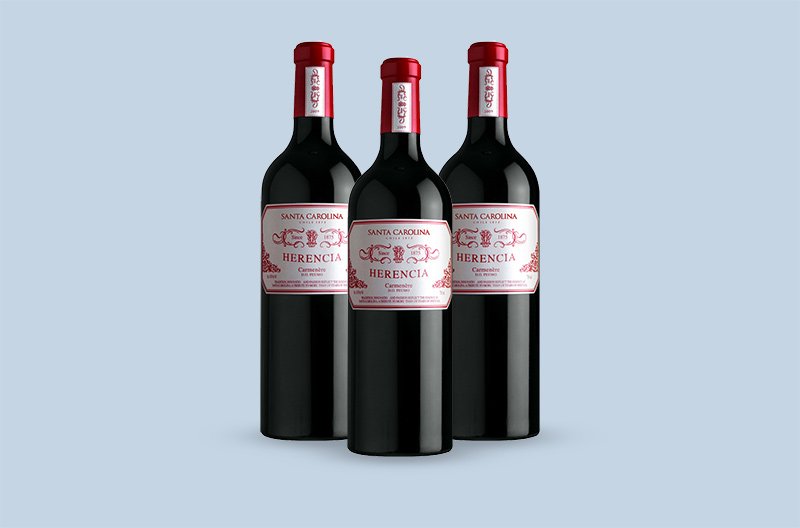
This Carmenere is smooth and bold with soft tannins and high acidity. It has a velvety mouth with flavors of plum, vanilla, and leather. Pair this Chilean Carmenere with a rich beef dish.
Price of Santa Carolina Herencia Carmenere, Peumo, Chile, 2014: $134
4. Montes Purple Angel Carmenere, Colchagua Valley, Chile, 2017
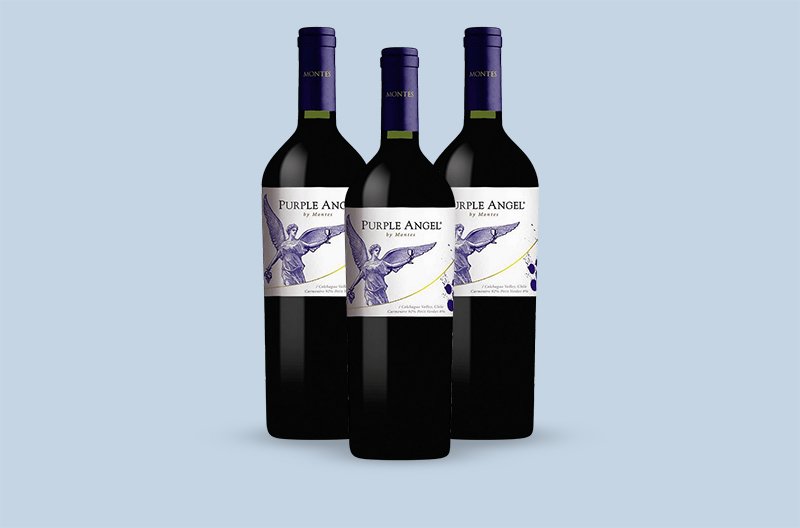
This wine truly is 92% Carmenere and 8% Petit Verdot. The Chilean winemakers from Colchagua Valley have created a lush and rich Carmenere with flavor notes of blackberry, green pepper, and plum. The wine is aged in French oak barrels for over a year.
Pair this Chilean wine with pasta and black pepper sauce.
Price of Montes Purple Angel Carmenere, Colchagua Valley, Chile, 2017: $77
5. Francois Lurton Hacienda Araucano Alka Carmenere, Colchagua Valley, Chile, 2015
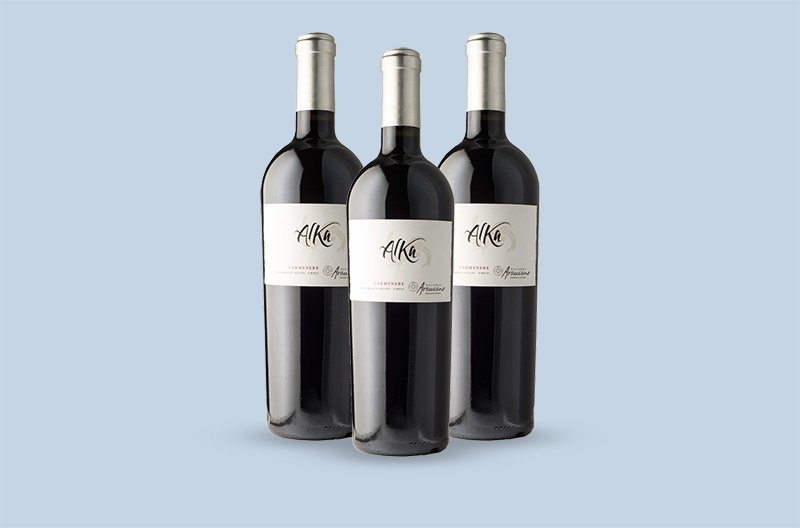
The Carmenere vineyard at the estate of this Chilean winemaker had a good year in 2015, with decent rainfall after a few dry years. The result is a well-balanced varietal wine with ripe flavors of berries and a hint of earthiness.Price of Francois Lurton Hacienda Araucano Alka Carmenere, Colchagua Valley, Chile, 2015: $74
6. Tenuta San Leonardo Carmenere, Trentino-Alto Adige, Italy, 2010
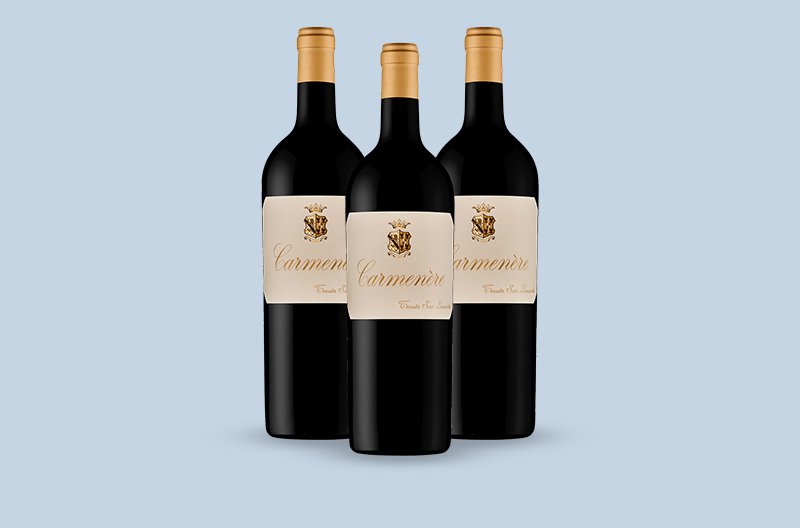
This Carmenere varietal wine is made by winemaker Tenuta San Leonardo in Italy from the oldest Carmenere vineyard in the world. It has been matured in French oak barrels.
This is a light and aromatic Carmenere wine that ages well. Pair this wine with a rich turkey dish.
Price of Tenuta San Leonardo Carmenere, Trentino-Alto Adige, Italy, 2010: $71
7. Santa Rita Pehuen Carmenere, Apalta, Chile, 2013
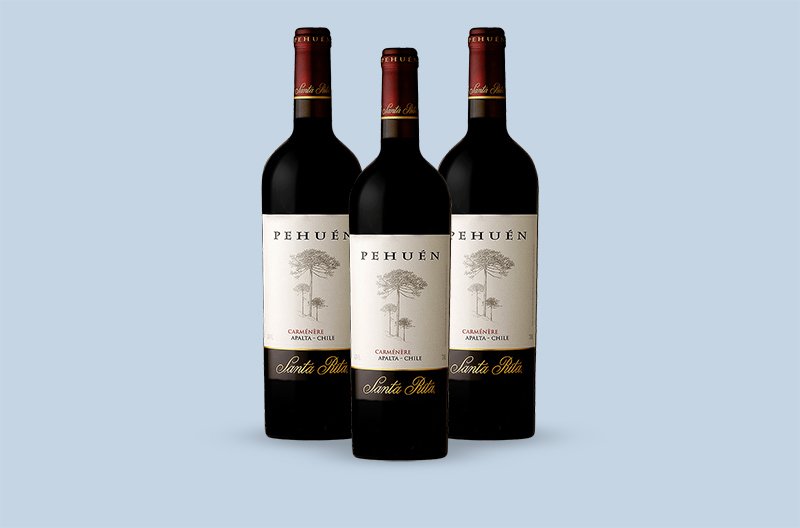
This is a delicious, aromatic, and floral varietal Carmenere from the Chilean winemakers Santa Rita. It’s a dry wine with well-balanced acidity and softer tannin levels. It has flavors of cassis, pepper, cocoa, and blackberries.
Pair this Chilean wine with roast lamb and herbs.Price of Santa Rita Pehuen Carmenere, Apalta, Chile, 2013: $60
8. San Pedro Tierras Moradas Carmenere, Maule Valley, Chile, 2017
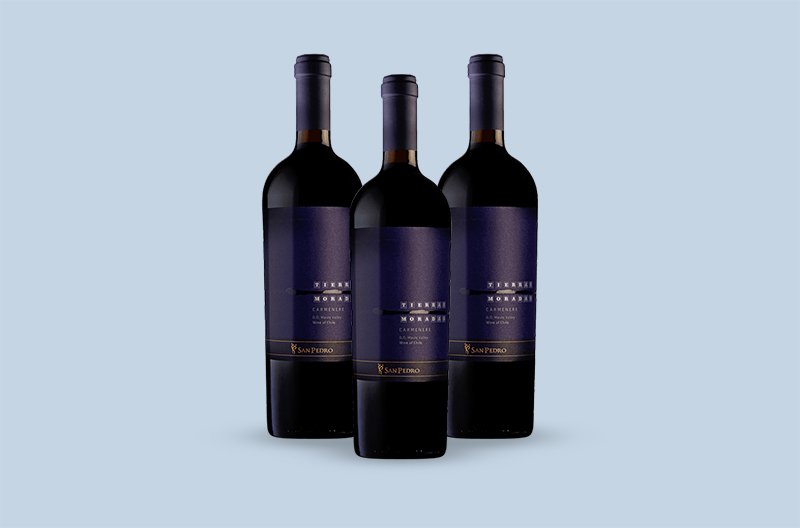
San Pedro winery has produced a luscious and beautifully perfumed Chilean wine with red fruit, spices, and chocolate fragrances. It has a delicate palate of oak that works well with the balanced acidity of the wine.
Pair this Chilean Carmenere with seafood or a pasta dish.Price of San Pedro Tierras Moradas Carmenere, Maule Valley, Chile, 2017: $59
9. Ca' del Bosco Carmenero Sebino Rosso IGT, Lombardy, Italy, 1998

Here we have deep and dramatic Italian varietal Carmenere wines with intense flavors of black pepper, smoke, red fruit, and plums. This is a Bordeaux style Carmenere that has well-balanced acidity and is tart on the palate.
Pair this wine with a roasted chicken dish.Price of Ca' del Bosco Carmenero Sebino Rosso IGT, Lombardy, Italy, 1998: $75
10. Antiyal Carmenere Vinedo Escorial, Maipo Valley, Chile, 2015

We end off with a Chilean Carmenere that tastes like fresh red fruit, oak, and vanilla. This wine is juicy and layered, with a smooth finish. It is a dry and bold wine, which would pair well with a cheese board or seared tuna.
Price of Antiyal Carmenere Vinedo Escorial, Maipo Valley, Chile, 2015: $56
Now that we know which bottles of Carmenere to buy, let's find out how long they’ll last!
Does Carmenere Age Well?

Carmenere’s ability to age depends on the quality of the wine. If the wine is of high quality (like the ones from Peumo), then Carmenere ages well and can keep for over 15 years.
When the tannins in Carmenere are well-balanced, it can age well, whereas if the tannin levels are low, it is better to drink it young. Most Carmenere wines are enjoyed as young wines, with a few noteworthy exceptions. A good example is wine number nine on our list - the Ca' del Bosco Carmenero Sebino Rosso IGT, 1998 - that still tastes exquisite after 22 years.
Now, Carmenere is a fine wine for drinking, and the best ones can be considered as affordable luxury wines.
But, if you want to invest in the finest, rarest wines in the world, there are plenty of other investment-grade wines that can age well in your cellar and fetch you a fortune if you sell them after years!
And, how do you build a collection of these investment-grade wines?
Here’s how:
Buy Carmenere and Other Fine Wines Through Vinovest
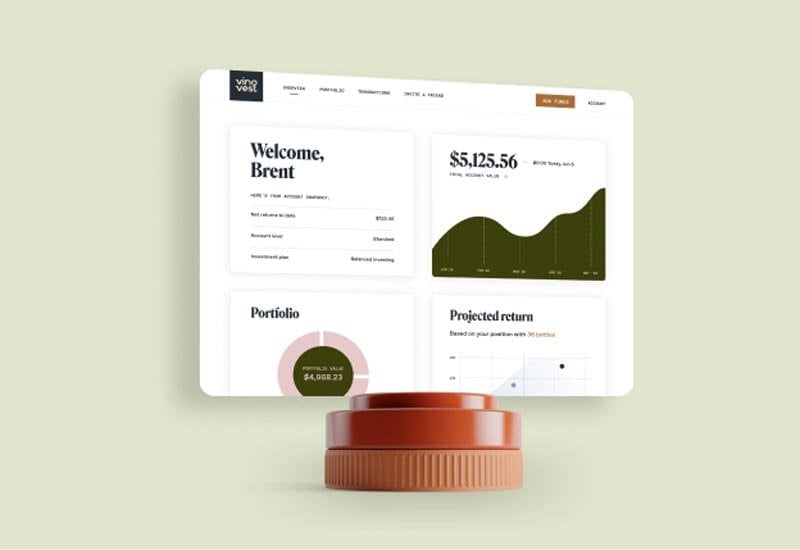
Vinovest is a trusted wine investment company that offers you a lucrative and safe way to invest in the world’s finest wines.
How it Works
Follow these four simple steps:
1. Sign up on the website.
2. Fill up a questionnaire to help Vinovest determine your risk appetite and investment preferences.
3. Add a minimum of $1,000 to fund your account.
4. Create a lucrative wine portfolio of great wines and watch it grow!
The Benefits of Vinovest
Here are some of the reasons why Vinovest is an excellent option for wine investment.
1. Easy Buying and Selling
With Vinovest, you can buy and sell wines from anywhere in the world with just a few clicks - whether that’s a coveted bottle of Syrah, Pinot Noir, Cabernet Sauvignon, or an elegant Tempranillo!
2. Best Prices
Vinovest allows you to easily buy investment-grade red wines like Cabernet Franc or white wines like Sauvignon Blanc at the best prices without the burden of middlemen and retailer markups.
3. A Bespoke Portfolio
Vinovest has Master Sommeliers that combine their expertise with Artificial Intelligence-driven investment algorithms - so the hard research and number crunching are done for you! Sit back, and fill your portfolio with coveted cases of Screaming Eagle or high-quality Chardonnay.
4. Authenticity and provenance
Vinovest traces the provenance of every bottle you buy - from Pomerol to Pouilly Fuisse - and makes sure it is authentic. So you clearly avoid the possibility of counterfeit bottles!
5. Optimal Storage and Safety
Every bottle of wine is stored in world-class wine storage facilities in France, the UK, Switzerland, and other countries. These warehouses maintain perfect light, temperature, vibration, and humidity conditions. Vinovest also offers a full insurance policy at market value, which protects each bottle against breakage, theft, and loss.
6. Low overall costs
Vinovest offers lower fees than most other wine investment firms - a 2.5% annual fee (with a discount for portfolios above $50,000). This reasonable fee covers buying wines, authentication, storage, a full insurance policy at market value, portfolio management, and selling the wine bottles.
7. Easy delivery
Whether you want to enjoy your bottles of ice wine at a festive celebration or deliver your Bordeaux Cabernet Sauvignon or Cabernet Franc, or sweet red wine to a buyer - Vinovest will make sure that your wine safely arrives at its intended destination.
Enjoy Chilean Carmenere and Other Unique Wines

Carmenere wine is a fantastic party drink and an everyday drinking wine and pairs well with a variety of foods.
However, this delicious red wine may not be a long-term investment option.
If you want to build an investment-grade portfolio, you can explore other fine wine options through Vinovest. So, wait no longer - simply sign up to start building your winning wine portfolio right away!
